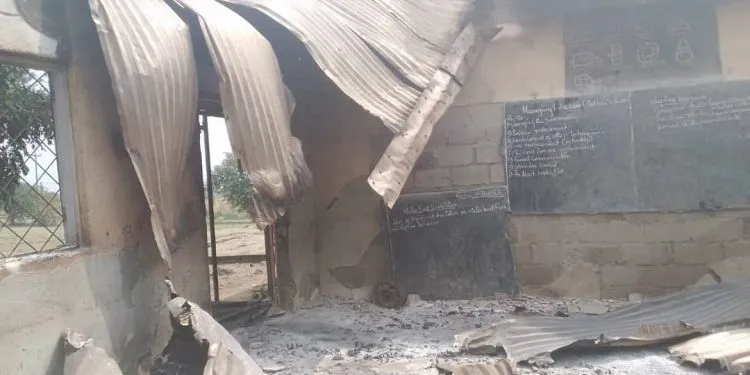By Tata Mbunwe
The United Nations Office for the Coordination of Humanitarian Affairs, OCHA, has said more than 3,200 schools are still closed in Cameroon’s restive North West and South West regions.
The assessement in the content of a report which OCHA published March 10. It has been published as the bloodletting in the two regions continue to drag on over five years after a teachers’ and lawyers’ strike morphed into an armed conflict.
OCHA reports that schools remain targetted by armed groups in the two regions although calls by separatists for school boycott have subsided.
“Attacks against school staff and educational premises continued,” OCHA stated. “On 19 January,” it noted that “non-state armed fighters intruded into the premises of the Government High School of Weh in Menchum division in the North West region and abducted five teachers.
The incident caused the closure of other schools in Weh. On 26 January, non-State armed fighters abducted three teachers at a Government Technical College in Keyon, Oku subdivision in the North West region.”
Some of these attacks, the report indicated, have kept school attendance low across the regions and insecurity especially in rural areas has shifted school attendance to urban areas of the English-speaking regions.
“Out of 5,724 primary and secondary schools, 3,223 schools are non-functional because of the crisis. Most of the operational schools are found in urban settings. In the North West and South West regions as well as in the Littoral, West, Centre and Adamawa regions hosting Internally Displaced Persons, IDPs, an estimated 462,000 students need emergency education assistance.”
Going by OCHA, “based on the available statistics, over 210,000 displaced school-aged children within the North West and South West regions are estimated to be displaced. Only 19,650 children among them (9 per cent) are attending formal schools.
“An estimated 123,000 IDPs in the North West and South West regions need access to education. This adds to the host community children which are out of school. In the Adamawa, Centre, Littoral and West, 107,152 IDP school-aged children out of 143,160 have access to formal education,” the body’s recent report stated.
The mass exodus of students and English-speaking Cameroonians into neighbouring regions , OCHA observed, has put pressure on schools in those areas, some of which are now operating beyond their capacity.
Many displaced students, OCHA added, are facing tough times in their new environments. In desperate attempts to continue their education, some of them are, it also observed, are now engaged in self-destructive activities.
“In some instances, girls, including primary school students, resort to survival sex, to pay for their education. Educational institutions reportedly charge additional fees to IDPs, while some facilities are already overcrowded with an average class size of up to 200 students. Schools hosting IDPs in Littoral, West and the urban areas of North West and South West regions have stretched capacity, poor sanitation, and increased risks of COVID-19 transmission.”
Among the latest attacks on schools in the Anglophone regions, the OCHA report mentioned the burning of dormitory blocks at Queen of Rosary College, Okoyong, Mamfe, in the South West region on February 10 this year.
The attack was blamed on separatist fighters and a day later, one of the separatist, Yerima Dabney, criticized the attack and said they were against attacks on schools.
Before the Okoyong attack, armed men had burnt down a classroom at Government Practicing School Molyko Group 1 in Buea.
After separatists relaxed the call for school boycott, which they have used to paralyse education in the English-speaking regions for over four years now, community schools popped up in some suburbs to replace government schools.
It was reported that the separatists did not want government schools to go on. However, attacks have also been perpetrated on private schools like CPC Bali, PCSS Bamenda and several others.



